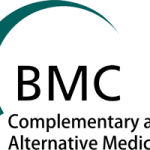Jeremy Y. Ng, Heather S. BoonEmail author, Alison K. Thompson and Cynthia R. Whitehead
Making sense of “alternative”, “complementary”, “unconventional” and “integrative” medicine: exploring the terms and meanings through a textual analysis
BMC Compl Alt Med, 2016, 16 (134)

Background – Medical pluralism has flourished throughout the Western world in spite of efforts to legitimize Western biomedical healthcare as “conventional medicine” and thereby relegate all non-physician-related forms of healthcare to an “other” category. These “other” practitioners have been referred to as “unconventional”, “alternative” and “complementary”, among other terms throughout the past half century.
Methods – This study investigates the discourses surrounding the changes in the terms, and their meanings, used to describe unconventional medicine in North America. Terms identified by the literature as synonymous to unconventional medicine were searched using the Scopus database. A textual analysis following the method described by Kripendorff 2013 was subsequently performed on the five most highly-cited unconventional medicine-related peer-reviewed literature published between 1970 and 2013.
Results – Five commonly-used, unconventional medicine-related terms were identified. Authors using “complementary and alternative”, “complementary”, “alternative”, or “unconventional” tended to define them by what they are not (e.g., therapies not taught/used in conventional medicine, therapy demands not met by conventional medicine, and therapies that lack research on safety, efficacy and effectiveness). Authors defined “integrated/integrative” medicine by what it is (e.g., a new model of healthcare, the combining of both conventional and unconventional therapies, accounting for the whole person, and preventative maintenance of health). Authors who defined terms by “what is not” stressed that the purpose of conducting research in this area was solely to create knowledge. Comparatively, authors who defined terms by “what is” sought to advocate for the evidence-based combination of unconventional and conventional medicines. Both author groups used scientific rhetoric to define unconventional medical practices.
Conclusions – This emergence of two groups of authors who used two different sets of terms to refer to the concept of “unconventional medicine” may explain why some journals, practitioner associations and research/practice centres may choose to use both “what is not” and “what is” terms in their discourse to attract interest from both groups. Since each of the two groups of terms (and authors who use them) has different meanings and goals, the evolution of this discourse will continue to be an interesting phenomenon to explore in the future.






Lascia un commento
Devi essere connesso per inviare un commento.